Mwworks designs floating pavilions for family retreat on Whidbey Island
Settled into the sloping landscape of a farm on Whidbey Island, Washington, this new retreat by Seattle-based mwworks is built of huckleberry basalt stone and western red cedar, and designed for a multi-generational family
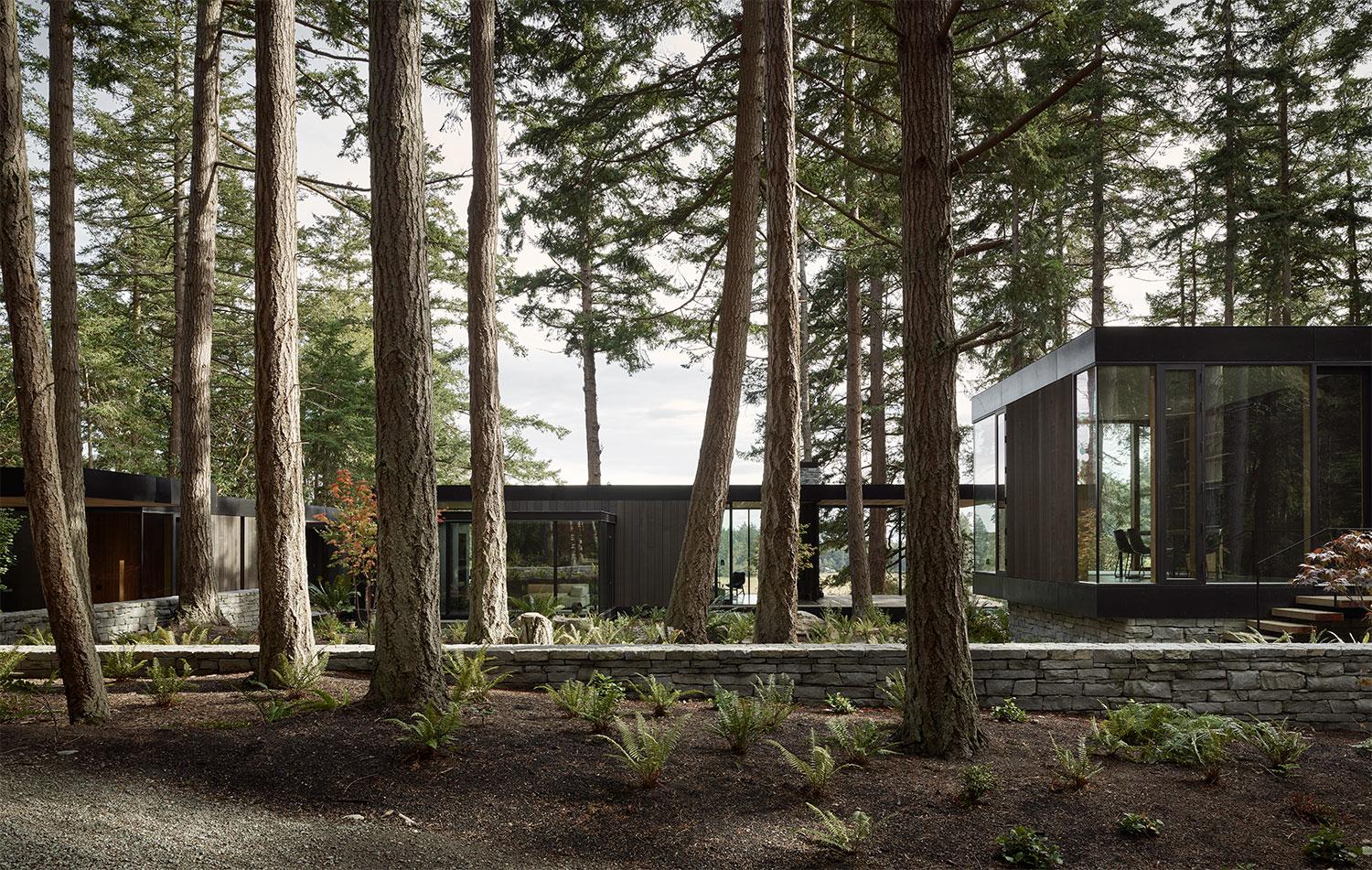
On the beautifully rugged Whidbey Island, just north of Seattle, a local family with a farm were looking to expand with a new house for leisure and overflow. Many generations had grown up on the farm, and the family was only getting bigger.
The owners, their three adult children, and their teenagers, all sat down around a table with Seattle-based architects mwworks to talk summer BBQs, fishing retreats, and family gatherings on Whidbey Island. It was clear from these conversations that the new retreat needed to be flexible, durable and hard-working to meet the demands of their activities.
Yet while a modern building was certainly required, the family were also cautious about maintaining the legacy of the farm, and needed a gentle solution that was respectful of the land. Their sprawling farm encompasses an evergreen forest, a fishing pond and a set of well-weathered historic agricultural buildings, such as the ‘red barn’ and a set of chicken sheds – every square metre is embedded with memories and history.
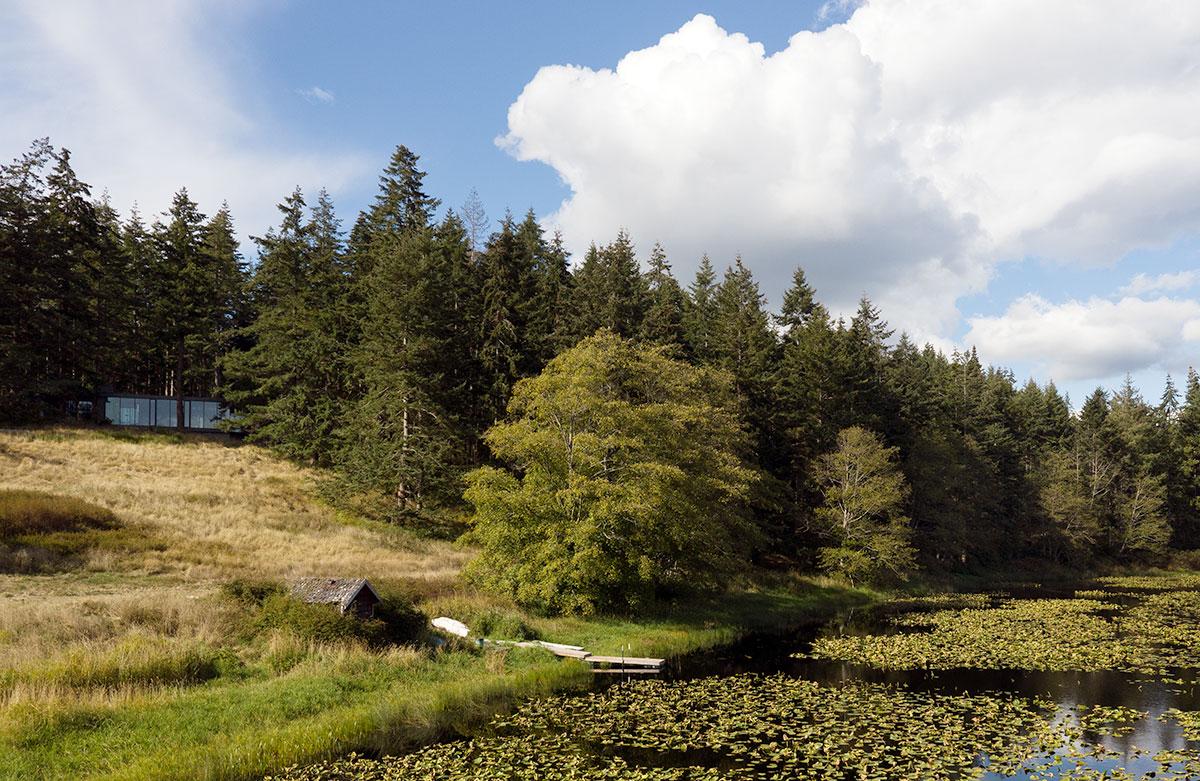

Mwworks came up with a design for two pavilion-like structures, connected by a flowing courtyard, that sit lightly in the sloping land. Comfortable for two or 20 people, the volumes comprise a house with four bedrooms and a second house for extra grandchildren and guests. The courtyard, enclosed by a low wall of stacked local basalt stone and planted with native shrubs and ferns, is a bridging device that creates either connection or separation when needed. A volume in itself, it also allows the pavilions to meander in the landscape, creating the feeling that the architecture has been woven in between the douglas fir, hemlock and madronas on the edge of the forest.
While the house was a totally new structure, it finds ways to lift from and give back to the site through a circularity of materials. Any trees felled in the process were returned to the farm for lumber, cattle fencing or firewood, both the huckleberry basalt stone and western red cedar were sourced locally, and renewable natural materials were used at every opportunity, with low maintenance finishes that would softly age alongside the land over time.

‘The house honours both the timelessness of the forest and agricultural heritage of the site,’ says Steve Mongillo, project lead and principal at mwworks. Mongillo set up the practice alongside Eric Walter in 2007, and the honesty, materiality and richly crafted details seen at the Whidbey Island Retreat are qualities that can be seen across their other residential projects.
Inside the retreat, history becomes part of the architecture with the use of unique carved solid cedar slabs on the interior doors and walls. These handcrafted panels were made decades ago by the family patriarch, a doctor who filled his time between patients by methodically carving the designs. Mwworks responded to this memory by incorporating new solid plank cedar into the master bedroom door, as a future carving project for the owner, between his farming responsibilities.
Contributing their own personal history to the retreat, the owners became creative collaborators in the design. They also found a way to commemorate everyone else involved too, making history for future generations: ‘To the team’s surprise, when the home was completed the owner had a custom bronze plaque made to display in the house. It listed the name of every person that significantly contributed to the house design and construction, including many incredible carpenters and craftspeople. They felt intense appreciation for the people that made the house what it is. We wholehearted agree,’ says Mongillo.
Receive our daily digest of inspiration, escapism and design stories from around the world direct to your inbox.

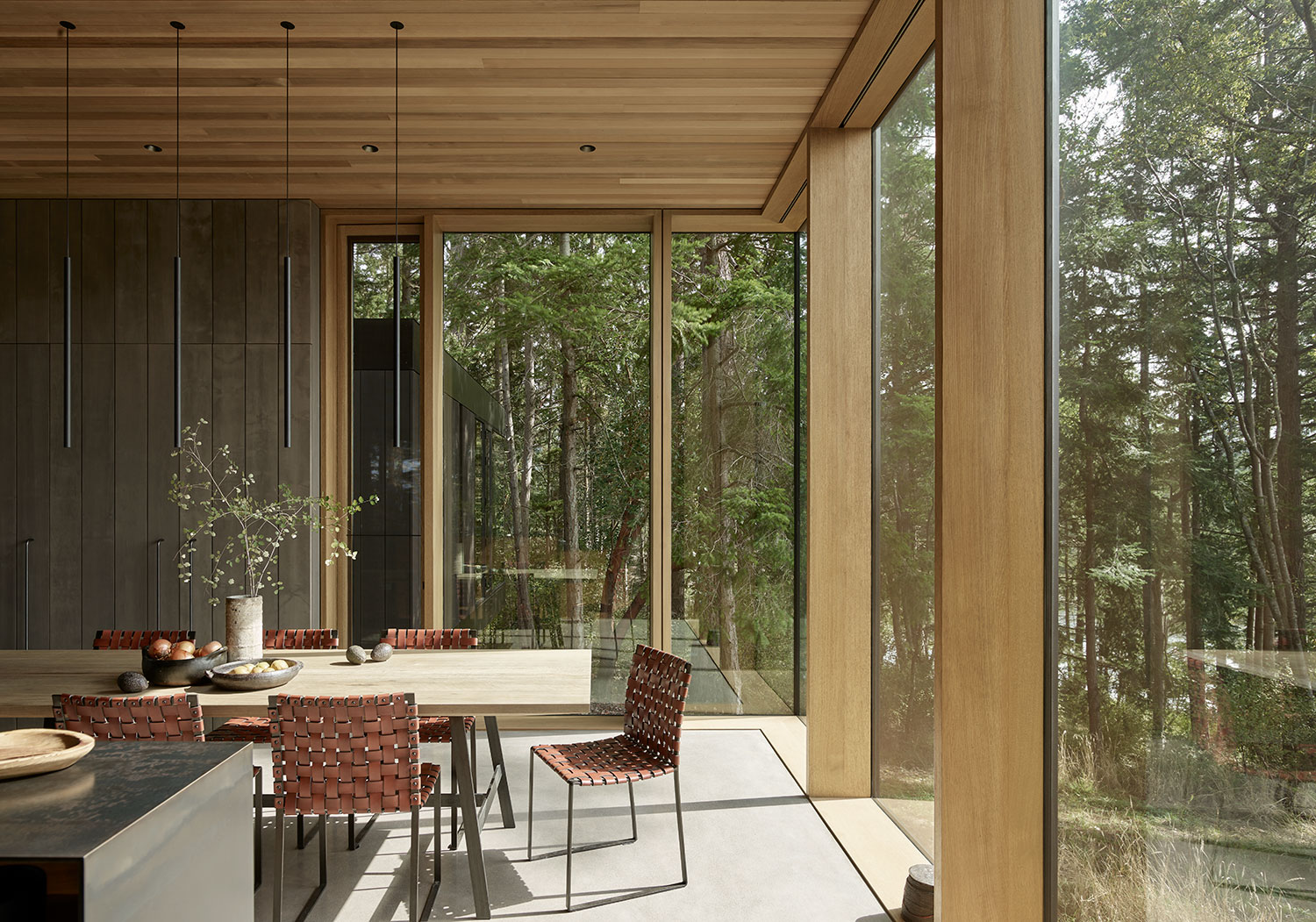
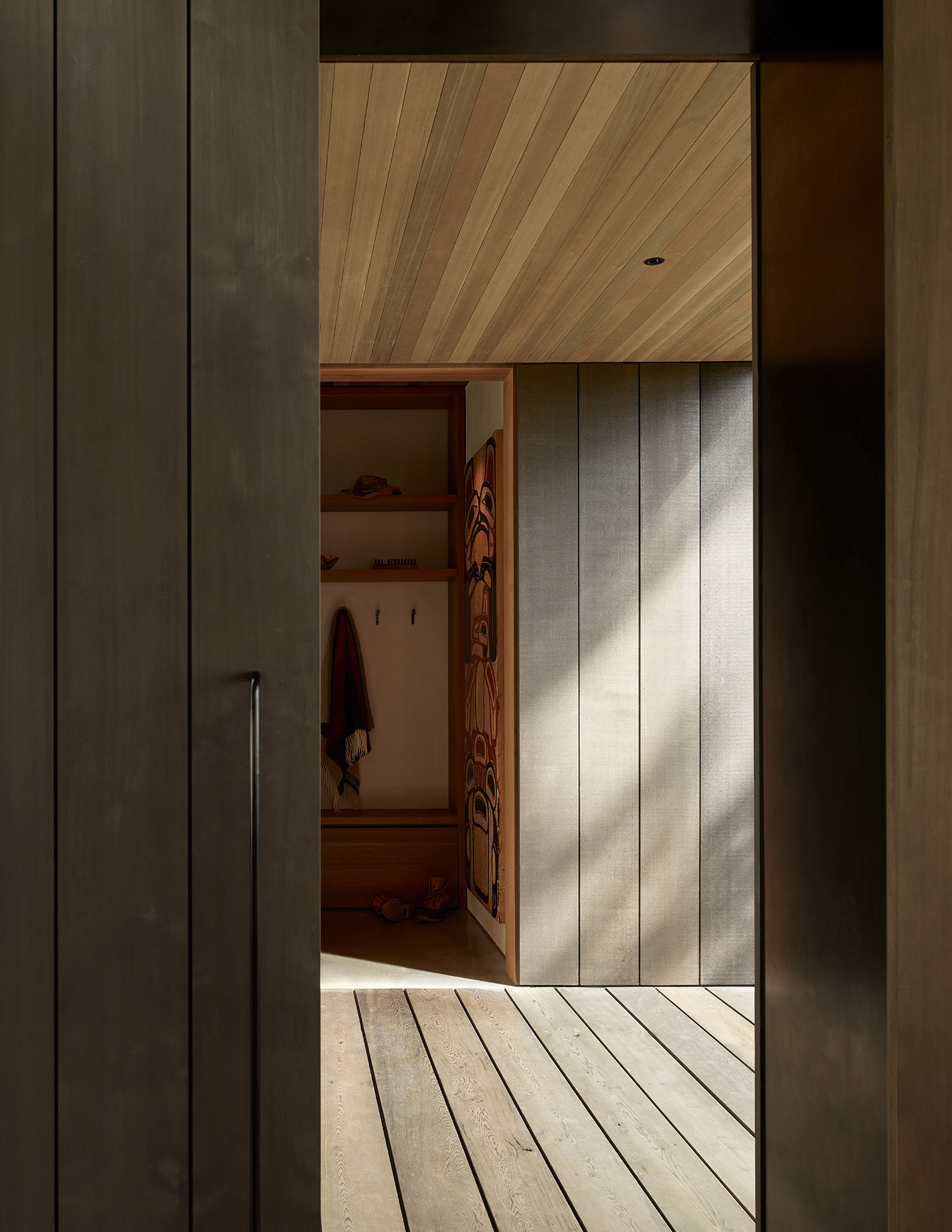
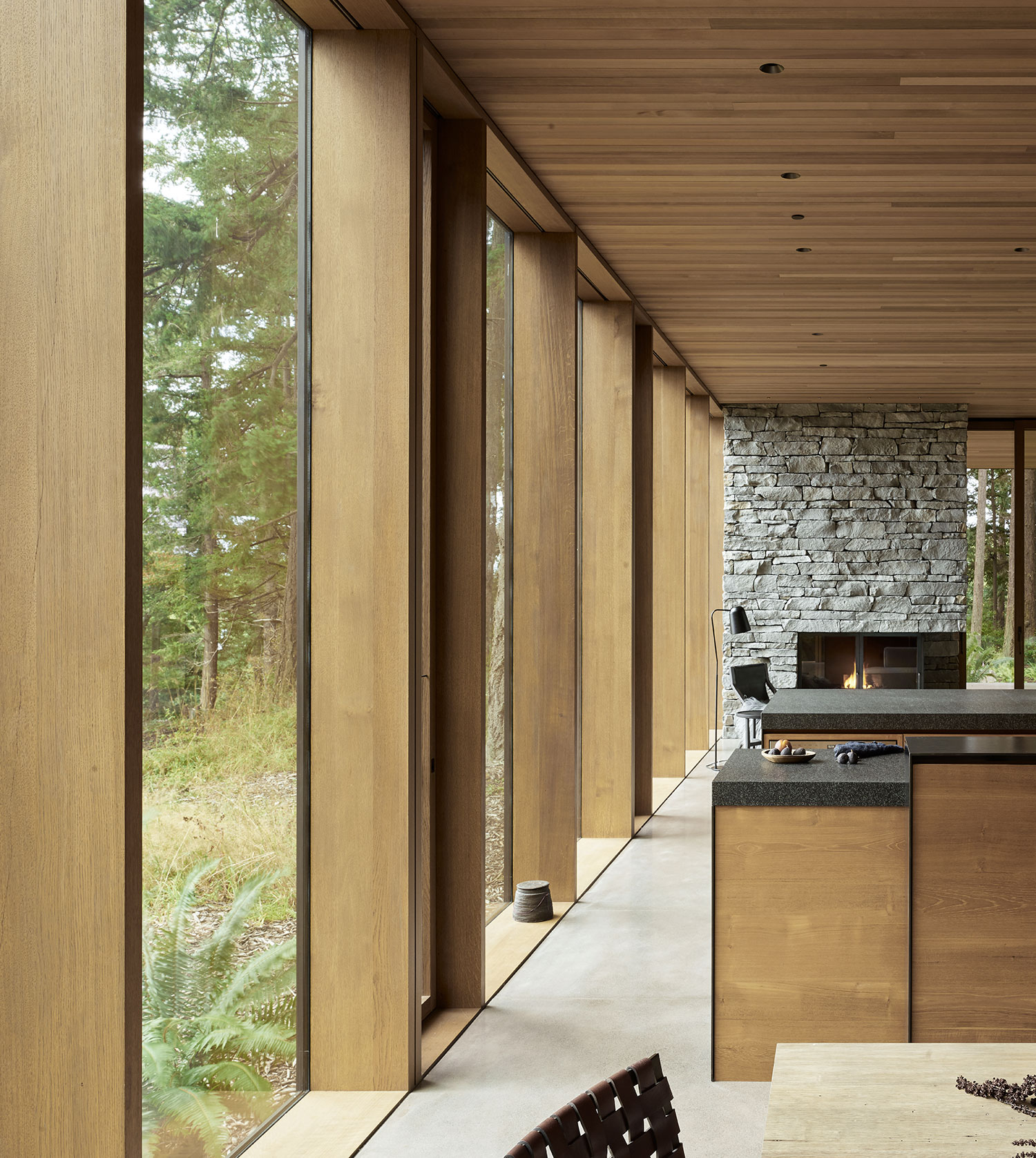

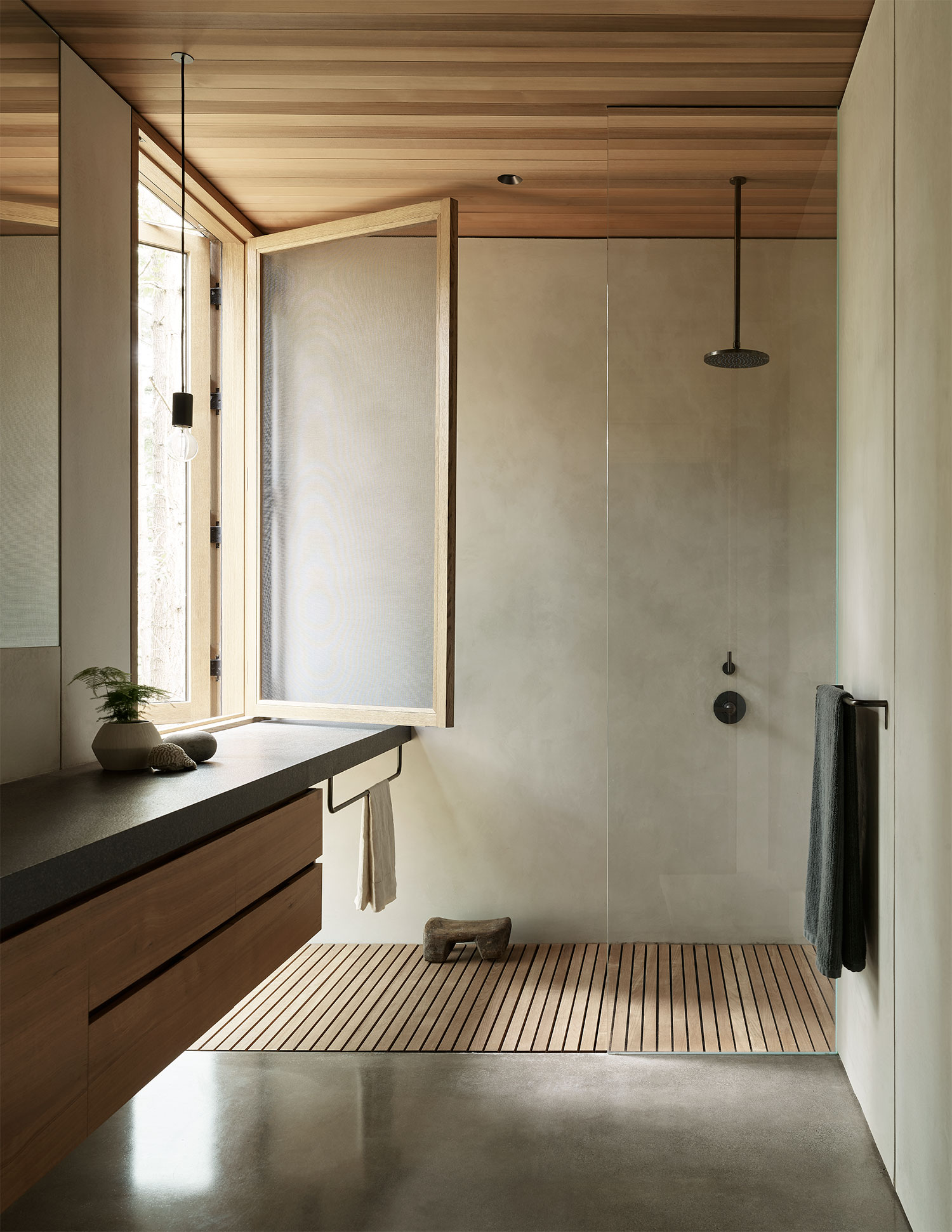
INFORMATION
Harriet Thorpe is a writer, journalist and editor covering architecture, design and culture, with particular interest in sustainability, 20th-century architecture and community. After studying History of Art at the School of Oriental and African Studies (SOAS) and Journalism at City University in London, she developed her interest in architecture working at Wallpaper* magazine and today contributes to Wallpaper*, The World of Interiors and Icon magazine, amongst other titles. She is author of The Sustainable City (2022, Hoxton Mini Press), a book about sustainable architecture in London, and the Modern Cambridge Map (2023, Blue Crow Media), a map of 20th-century architecture in Cambridge, the city where she grew up.
-
 Robert Therrien's largest-ever museum show in Los Angeles is enduringly appealing
Robert Therrien's largest-ever museum show in Los Angeles is enduringly appealing'This is a Story' at The Broad unites 120 of Robert Therrien's sculptures, paintings and works on paper
-
 The Wallpaper* style team recall their personal style moments of 2025
The Wallpaper* style team recall their personal style moments of 2025In a landmark year for fashion, the Wallpaper* style editors found joy in the new – from Matthieu Blazy’s Chanel debut to a clean slate at Jil Sander
-
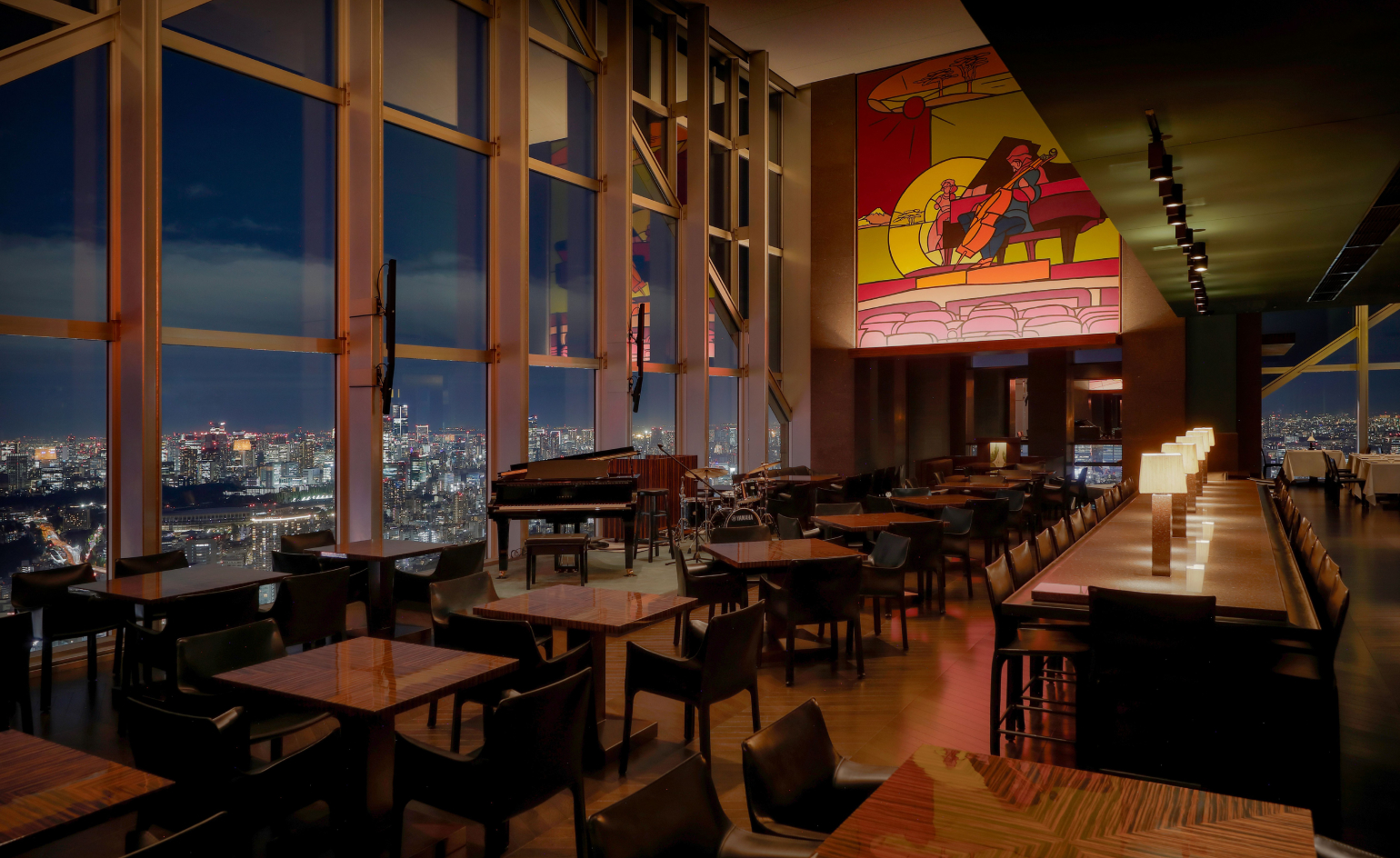 Tokyo’s most cinematic stay reopens as an exercise in architectural self-control
Tokyo’s most cinematic stay reopens as an exercise in architectural self-controlPark Hyatt Tokyo and Studio Jouin Manku demonstrate how design can evolve without erasing memory, balancing modernist heritage with contemporary comfort
-
 Step inside this resilient, river-facing cabin for a life with ‘less stuff’
Step inside this resilient, river-facing cabin for a life with ‘less stuff’A tough little cabin designed by architects Wittman Estes, with a big view of the Pacific Northwest's Wenatchee River, is the perfect cosy retreat
-
 Remembering Robert A.M. Stern, an architect who discovered possibility in the past
Remembering Robert A.M. Stern, an architect who discovered possibility in the pastIt's easy to dismiss the late architect as a traditionalist. But Stern was, in fact, a design rebel whose buildings were as distinctly grand and buttoned-up as his chalk-striped suits
-
 Own an early John Lautner, perched in LA’s Echo Park hills
Own an early John Lautner, perched in LA’s Echo Park hillsThe restored and updated Jules Salkin Residence by John Lautner is a unique piece of Californian design heritage, an early private house by the Frank Lloyd Wright acolyte that points to his future iconic status
-
 The Stahl House – an icon of mid-century modernism – is for sale in Los Angeles
The Stahl House – an icon of mid-century modernism – is for sale in Los AngelesAfter 65 years in the hands of the same family, the home, also known as Case Study House #22, has been listed for $25 million
-
 Houston's Ismaili Centre is the most dazzling new building in America. Here's a look inside
Houston's Ismaili Centre is the most dazzling new building in America. Here's a look insideLondon-based architect Farshid Moussavi designed a new building open to all – and in the process, has created a gleaming new monument
-
 Frank Lloyd Wright’s Fountainhead will be opened to the public for the first time
Frank Lloyd Wright’s Fountainhead will be opened to the public for the first timeThe home, a defining example of the architect’s vision for American design, has been acquired by the Mississippi Museum of Art, which will open it to the public, giving visitors the chance to experience Frank Lloyd Wright’s genius firsthand
-
 Clad in terracotta, these new Williamsburg homes blend loft living and an organic feel
Clad in terracotta, these new Williamsburg homes blend loft living and an organic feelThe Williamsburg homes inside 103 Grand Street, designed by Brooklyn-based architects Of Possible, bring together elegant interiors and dramatic outdoor space in a slick, stacked volume
-
 This ethereal Miami residence sprouted out of a wild, jungle-like garden
This ethereal Miami residence sprouted out of a wild, jungle-like gardenA Miami couple tapped local firm Brillhart Architecture to design them a house that merged Florida vernacular, Paul Rudolph and 'too many plants to count’